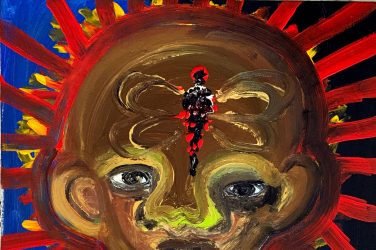Brazil is now paying more attention to the contribution which
blacks and people of mixed race
have made to the country’s cultural
and artistic development. Five hundred years’ history cannot be wiped out overnight, but changes are taking place.
The Brazzil Forum has had a long-running discussion on what it is like to be black in Brazil. From what I have seen,
most of the participants are not black or even in Brazil so their views are based on theory rather than fact. If any of these
contributors are in São Paulo I would urge them to visit a recently opened exhibition called “Negras Memórias, Memórias de Negros:
O Imaginário Luso-Afro-Brasileiro a Herança da
Escravidão.”1 There they will see for themselves that Brazil is now paying
more attention to the contribution which blacks and people of mixed race have made to the country’s cultural and artistic
development. I doubt if such an event would have been held even 10 years ago.
The days when the blacks and mixed race population was overlooked are ending. The fact that, in some places, such
as Rio de Janeiro, a quota system is being introduced for black and mixed race students at colleges has encouraged a
debate on the wisdom of following this path. There is a great deal of resentment among part of the population and doubts over
whether quotas will work. However, the fact that this debate is taking place at all is encouraging and shows that the black is no
longer the invisible man. Five hundred years’ history cannot be wiped out overnight, but it would be a sign of maturity if some
of the more extreme contributors to this endless discussion thread on the Brazzil Forum were to accept that changes are
taking place.
As to the exhibition itself, it would require at least a half-day to appreciate all the exhibits involved. These range from
masks and fetishes from the parts of Africa where the slaves came from to paintings and sculptures by modern black and mixed
race artists and craftsmen. Historical documents, maps, plans and drawings depict the different nationalities of the slaves and
the conditions under which they were traded before being shipped to Brazil to work in the fields and sugar plantations.
There are many drawings and paintings of individuals and, even at a very early stage, one sees the form of the
typical Brazilian mulatto developing. The exhibition depicts the horrors of the trans-Atlantic voyages in cramped slave ships
and the ill treatment meted out by the authorities. However, the rusting foot, hand and neck irons on display give a more
immediate idea of the horrors of slavery than any number of pictures of slaves being flogged.
As the title of the exhibition makes clear these African slaves quickly became Luso-Afro-Brasileiro i.e. Brazilians.
Their religious and artistic contributions, which combined Africa, native Indian and Portuguese elements, created the
astonishing mosaic which is Brazilian culture. I would recommend that visitors to São Paulo also take the opportunity of seeing the
exhibition entitled “Albert Eckhout Volta ao
Brasil.”2 I have already written on this exhibition of the works of the Dutch painter,
Albert Eckhout, who spent eight years in Northeast Brazil in the mid
17th century when the area was under Dutch rule. These
two exhibitions in combination provide a rare opportunity for the visitor to peer into the Brazilian looking glass and see what
looks back.
1″Black Memories, Memories of Blacks: The Imaginary Luso-Afro-Brazilian and the Heritage of Slavery.” The
exhibition is being held at the Galeria de Arte do Sesi in the FIESP building in Avenida Paulista from February 25 to June 29.
2 “Albert Eckhout Returns to Brazil” at the Pinoteca do Estado, Praça da Luz until March 30
John Fitzpatrick is a Scottish journalist who first visited Brazil in 1987 and has lived in São Paulo since 1995. He
writes on politics and finance and runs his own company, Celtic Comunicações—
www.celt.com.br, which specializes in
editorial and translation services for Brazilian and foreign clients. You can reach him at
jf@celt.com.br
© John Fitzpatrick 2003
You can also read John Fitzpatrick’s articles in
Infobrazil, at www.infobrazil.com
Discuss it in our Forum
Send
your
comments to
Brazzil











